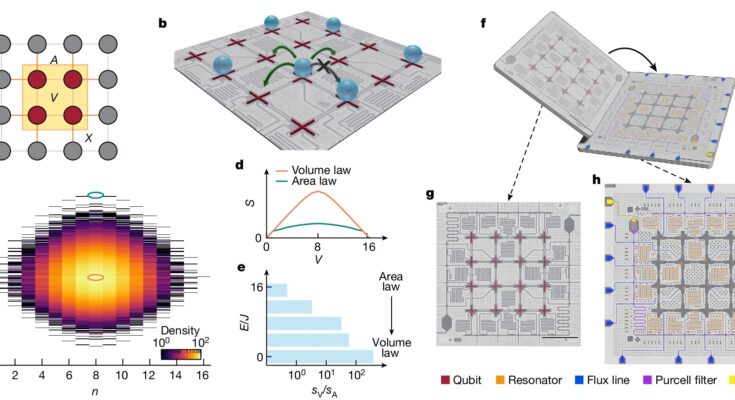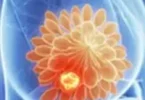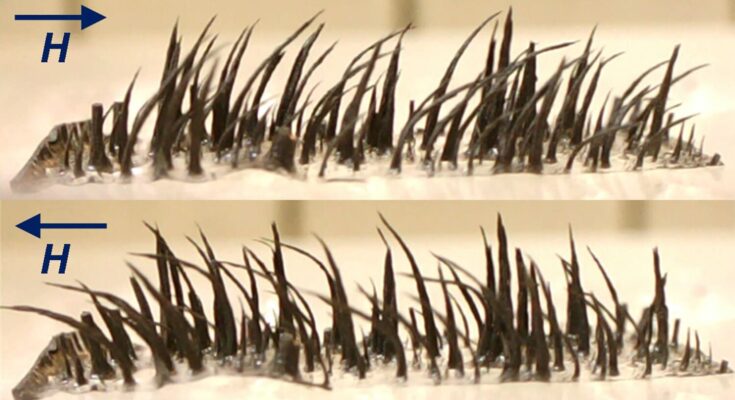Test idea. aSchematic for example subsystem X of four qubits in a 16-qubit lattice. Subsystem has number 4 (maroon areas) and area 8 (orange lines). b, the 2D HCBH lattice is simulated by a superconducting quantum circuit. Each field can occupy, at most, one particle. cStrength YesThe spectrum of the HCBH lattice simulated by our instrument, shown in the rotating resonant frame and the lattice sites. Energy waves are divided into distinct components defined by the total number of particles n . dImprovement of the entanglement component S which contains subsystem volume V for the eigenstate at the center of the energy (the orange line, corresponding to the eigenstate energy highlighted by the orange oval in c) and the eigenstate at the energy edge (the teal line, corresponding to the energy eigenstate highlighted by the teal oval in c). yesA change in the behavior of the arrest, measured by the geometric entropy measure sV/sAfor countries with n= 8. fSchematic for a sample flip-chip with 16 superconducting qubits. g,hOptical imaging of the qubit tier (g) and the interposer group (h) are represented by qubits and different lines of negative colored symbols. Scale bars, 1 mm. Credit: Nature (2024). DOI: 10.1038/s41586-024-07325-z
Entanglement is a type of connection between quantum objects, such as particles at the atomic scale. The laws of classical physics cannot explain this unique quantum phenomenon, yet it is one of the things that explain the macroscopic behavior of quantum systems.
Because entanglement is central to the way quantum systems work, understanding it better can give scientists a deeper understanding of how information is stored and processed in such systems. .
Qubits, or quantum bits, are the building blocks of quantum computing. However, it is very difficult to create countries that are caught up in many systems, let alone research them. There are also different types of concussions, and separating them can be difficult.
Now, MIT researchers have demonstrated a way to create chaos among many types of superconducting qubits that exhibit a specific type of behavior.
In recent years, researchers in the Engineering Quantum Systems (EQuS) group have developed methods that use microwave technology to precisely control a quantum processor made of superconducting circuits. In addition to these control methods, the methods presented in this work help the processor to generate highly disturbed states and to move those states from one type to another – including between types with the possibility of support quantum speed and what not.
“Here, we show that we can use emerging quantum processors as a tool to improve our understanding of physics. Although everything we did in this experiment was at a scale that can still be replicated in an old computer, we have a good road map for scaling this technology and how to use the old computer,” says Amir H. Karamlou ’18, MEng ’18, Ph.D. ’23, editor-in-chief of the paper.
Research appears on Nature .
Checking is held
In a large quantum system with many interconnected qubits, one can think of entanglement as the amount of information shared between a given subsystem of qubits and the entire larger system.
Entrainment in a quantum system can be classified as a field law or a height law depending on how this information is shared with the geometry of the subsystems. In the introduction of the volume law, the number of entanglements between a subsystem of qubits and the entire system grows proportionally to the total size of the subsystem.
On the other hand, interference with the spatial law depends on how many connections are shared between the subsystem of qubits and the larger system. As the subsystem grows, the number of arrests grows only at the boundary between the subsystem and the main system.
In theory, the establishment of the quantum law is related to what makes quantum computing so powerful.
“While we have yet to fully explain the role that entanglement plays in quantum algorithms, we know that generating confusion with the quantum rules is a key ingredient to getting the most out of it,” he says. Oliver.
However, the integration of sound is also more complicated than the confusion of spatial rules and prohibits the use of an old computer.
“As you increase the complexity of your quantum system, it becomes more and more difficult to simulate it with conventional computers. If I try to keep track of a system with 80 qubits, with for example, I will need to store more information than what we have stored in the entire history of mankind,” Karamlou says.
The researchers developed a quantum processor and control protocol that enabled them to generate and test two types of virtualization.
Their processor contains superconducting circuits, which are used to create artificial atoms. Artificial atoms are used as qubits, which can be controlled and read with high precision using microwave signals.
The device used for this experiment consisted of 16 qubits arranged in a two-dimensional network. The researchers carefully tuned the processor so that all 16 qubits have the same transition frequency. Then, they applied an extra microwave to all the qubits at the same time.
If this microwave has the same frequency as the qubits, it produces quantum states that show the induction of the sound law. However, as the microwave frequency is increased or decreased, the qubits exhibit a weak form of the sound law, eventually transitioning into excited states that follow the increase of the spatial law.
Careful management
“Our experiment is a demonstration of the potential of superconducting quantum processors.” In another experiment, we used the processor both as an analog simulation device, which enables us to accurately prepare states with different entanglement structures, and as a digital computer device, which is necessary . to measure the scale of what is to come,” says Rosen.
To enable that control, the team worked for years to carefully build the architecture around the quantum processor.
By demonstrating a crossover from sound law to spatial law enforcement, the researchers experimentally confirmed what theoretical studies had predicted. More importantly, this method can be used to determine whether the behavior of a generic quantum processor is a field law or a height law.
“The MIT experiment highlights the difference between the field law and the induction of the volume law in two quantum systems using superconducting qubits. This perfectly complements our work in combining Hamilton tomography with ions which are trapped in the same issue printed on Naturein 2023,” says Peter Zoller, a professor of physics at the University of Innsbruck, who was not involved in the work.
Google’s Pedram Roushan, who was not involved in the study, said: “Scaling multitasking is a difficult task for older computers, but it’s a good example of how the comparison of number can help.
“Using a 2D array of superconducting qubits, Karamlou and his colleagues were able to measure the input entropy of different systems of different sizes. They measured the contributions of law and law space to the entropy, revealing the behavior of the crossover as the energy of the quantum system is being prepared.
In the future, scientists may use this method to study the thermodynamic behavior of complex quantum systems, which are too complex to study using current analytical methods and prohibit even computer simulations. the most powerful in the world.
“The experiments we have done in this work can be used to characterize or characterize large quantum processes, and we can also learn something about the nature of trapping in these many physical processes,” says Karamlou.
Additional information:
Amir Karamlou, still trying to get caught up in Bose-Hubbard’s 2D hard disk, Nature(2024). DOI: 10.1038/s41586-024-07325-z. www.nature.com/articles/s41586-024-07325-z
Newspaper articles:
Nature
This story is republished with permission from MIT News (web.mit.edu/newsoffice/), a popular site covering news about MIT research, innovation and education.
#Scientists #organize #structure #deviation #array #qubits






